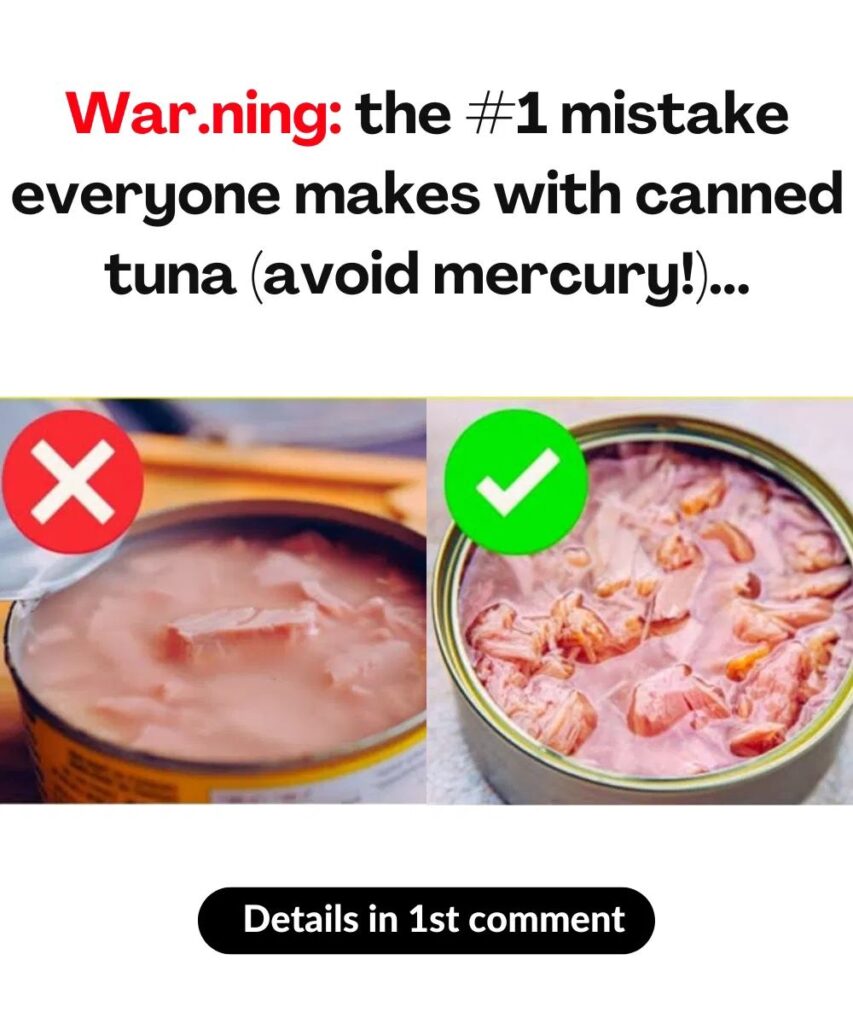
Is Your Canned Tuna Putting Your Health at Risk?
Canned tuna is a staple in many kitchens—affordable, high in protein, and incredibly convenient. But that go-to tuna sandwich could be quietly compromising your health. The hidden concern? Mercury contamination.
Mercury is a toxic heavy metal known to harm the nervous system, particularly with repeated exposure. Alarmingly, not all canned tuna is created equal—some varieties contain far higher mercury levels than others. Without realizing it, you could be regularly consuming unsafe amounts.
Here’s what you need to know to make safer, smarter choices without giving up this nutritious food.
What Is Mercury and Why Is It in Tuna?
Mercury occurs naturally in the environment, but industrial activities like coal burning and mining have significantly increased its presence. Once released, mercury enters waterways and transforms into methylmercury, a highly toxic compound.
In the ocean, mercury accumulates up the food chain—a process called bioaccumulation. Small fish absorb mercury from the water, larger fish eat those smaller fish, and the cycle continues. Tuna, being top predators, often end up with high mercury concentrations by the time they reach your plate.
Long-term mercury exposure can damage the brain, nerves, and heart. Pregnant women, young children, and individuals with neurological or cardiovascular conditions are especially vulnerable.
The Biggest Mistake: Choosing the Wrong Tuna
One of the most common consumer mistakes is not knowing the difference between tuna types. Here’s a quick breakdown:
- Skipjack Tuna (labeled as light tuna):
Low in mercury (~0.12 ppm) and generally considered safe for regular consumption. - Yellowfin Tuna:
Contains moderate mercury levels (~0.35 ppm). Best consumed occasionally. - Albacore Tuna (labeled as white tuna):
Highest in mercury (~0.50 ppm). Health experts advise limiting intake, especially for vulnerable groups.
Tip: If the can doesn’t specify the species, it’s likely skipjack—but always check the label to be sure.
Other Common Tuna Mistakes
Even when choosing the right type, other habits can affect your health:
- Skipping the Label:
Some brands disclose more about mercury levels than others. A quick online search or reading the fine print can help you make a safer choice. - Eating Too Much:
Tuna is healthy in moderation, but mercury accumulates over time. Experts recommend limiting seafood to about 8 ounces (227g) per week, especially for children and pregnant individuals. - Not Draining Properly:
Whether your tuna is packed in oil or water, draining it well helps reduce contaminants and improves texture. Use a strainer or press with the lid for best results.
Tuna in Oil vs. Tuna in Water: Which Is Safer?
Surprisingly, oil-packed tuna may help reduce mercury intake. Since mercury binds to fat, draining the oil can remove some of the metal along with it.
- Tuna in Oil:
Slightly higher in calories but richer in omega-3s and vitamin D. Potentially lower in mercury when properly drained. - Tuna in Water:
Leaner, but may retain more mercury. If mercury is your primary concern, opt for well-drained oil-packed tuna.
How to Keep Tuna in Your Diet Safely
You don’t need to eliminate canned tuna from your meals. Instead, follow these guidelines:
- Choose skipjack/light tuna for regular use.
- Read labels and pick trusted, transparent brands.
- Rotate with low-mercury fish like salmon, sardines, trout, and mackerel.
- Stick to recommended serving sizes, especially for sensitive groups.
Final Thoughts
Canned tuna remains a nutritious, protein-rich option—but only if consumed wisely. By understanding the risks of mercury and making informed choices, you can continue to enjoy tuna safely and confidently.
Next time you’re shopping, take an extra moment to check the label. A little awareness goes a long way in protecting your health.


